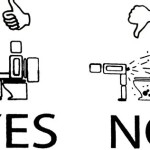How Much Does It Cost to Replace a Bathroom Sink Drain?
The bathroom sink drain, a seemingly small component, plays a crucial role in the overall functionality of a bathroom. When a drain malfunctions, whether due to clogs, leaks, corrosion, or age, it can disrupt daily routines and potentially lead to water damage. Replacing a bathroom sink drain is a common plumbing repair, and understanding the associated costs is essential for homeowners facing this issue. The expense can fluctuate significantly depending on various factors ranging from the type of drain chosen to the professional labor involved.
This article comprehensively examines the factors influencing the cost of replacing a bathroom sink drain. It will explore the different types of drains, material costs, labor expenses, and potential additional charges that may arise during the replacement process. By understanding these elements, homeowners can make informed decisions and effectively budget for this plumbing repair.
Cost of the Replacement Drain
The first major component of the overall cost is the price of the replacement drain itself. Bathroom sink drains come in a variety of materials and styles, each impacting the final cost. The most common types of drain assemblies include:
Pop-Up Drains: This type of drain utilizes a lever or button to open and close the drain stopper. They are a popular and aesthetically pleasing option found in many modern bathrooms. Pop-up drains can be constructed from various materials, including plastic, brass, and stainless steel. Plastic pop-up drains are generally the least expensive, ranging from $10 to $20. Brass models are more durable and can cost between $20 and $50, while stainless steel options offer corrosion resistance and a modern look, typically ranging from $30 to $60.
Lift-and-Turn Drains: These drains feature a stopper that is manually lifted and turned to open and close the drain. They are simpler in design compared to pop-up drains and can be a cost-effective alternative. Lift-and-turn drains are usually made of brass or stainless steel. The price for a lift-and-turn drain typically falls within the $15 to $40 range.
Grid Drains: Grid drains are a more basic type of drain that feature a fixed grid to prevent debris from entering the drainpipe. They are often found in older homes or in commercial settings where simplicity and durability are prioritized. Grid drains are typically made of brass or stainless steel. The cost for a grid drain generally ranges from $10 to $30.
Click-Clack Drains: Also known as push-button drains, these drains operate by pressing down on the stopper to open and close the drain. They offer a sleek and modern appearance. Click-clack drains are commonly made of brass or stainless steel and can range in price from $25 to $65, depending on the material and finish.
In addition to the type of drain, the finish can also impact the cost. Common finishes include chrome, brushed nickel, oil-rubbed bronze, and matte black. Specialty finishes can add to the price of the drain assembly. Homeowners should consider the overall aesthetic of their bathroom when selecting a drain finish to ensure a cohesive look.
Labor Costs for Professional Installation
While replacing a bathroom sink drain might seem like a straightforward DIY project, it often requires specific plumbing knowledge and tools. Improper installation can lead to leaks, water damage, and further complications. Many homeowners opt to hire a licensed plumber to ensure the job is done correctly and efficiently. Labor costs can vary depending on several factors:
Plumber's Hourly Rate: Plumbers typically charge an hourly rate for their services, which can vary based on location, experience, and demand. In most areas, a plumber's hourly rate ranges from $75 to $150. The average sink drain replacement takes approximately one to two hours, so labor costs can range from $75 to $300.
Minimum Service Fee: Some plumbers have a minimum service fee, regardless of the time required for the job. This fee can range from $50 to $100 and is important to consider when budgeting for the repair.
Complexity of the Job: The complexity of the drain replacement can also affect labor costs. If the existing drain is severely corroded or difficult to remove, or if there are complications with the existing plumbing, the plumber may need to spend more time on the job, increasing the overall labor costs.
Geographic Location: Labor costs can vary significantly depending on the geographic location. Plumbers in metropolitan areas with a higher cost of living typically charge more than plumbers in smaller towns or rural areas. Obtaining multiple quotes from local plumbers is advisable to ensure a competitive price.
Emergency or After-Hours Service: If the drain replacement is needed outside of regular business hours, such as during the evening or on a weekend, plumbers may charge a higher rate for emergency or after-hours service. This can significantly increase the overall cost of the repair.
It's crucial to obtain detailed quotes from multiple plumbers before making a decision. The quotes should clearly outline the hourly rate, any minimum service fees, and an estimate of the total labor cost. Homeowners should also inquire about any potential additional charges that may arise during the repair process.
Potential Additional Costs and Considerations
Beyond the cost of the drain and the labor charges, several additional factors can influence the overall expense of replacing a bathroom sink drain. These factors should be considered when budgeting for the repair.
Parts and Materials: In addition to the drain assembly, the plumber may need to replace other parts and materials during the repair. This can include:
- P-Trap: The P-trap is the curved pipe under the sink that traps debris and prevents sewer gases from entering the bathroom. If the P-trap is damaged or corroded, it may need to be replaced. A new P-trap typically costs between $10 and $30.
- Tailpiece: The tailpiece is the pipe that connects the sink drain to the P-trap. If the tailpiece is damaged or too short, it may need to be replaced. A new tailpiece typically costs between $5 and $20.
- Plumber's Putty or Silicone Sealant: Plumber's putty or silicone sealant is used to create a watertight seal between the drain flange and the sink. If the existing sealant is old or damaged, it will need to be replaced. A small container of plumber's putty or silicone sealant typically costs between $5 and $10.
- Supply Lines: While not directly related to the drain, corroded or leaking supply lines are often identified during drain replacement. Replacing these lines can prevent future leaks and water damage.
Obstacles or Damage to Existing Plumbing: If the existing plumbing is corroded, damaged, or difficult to access, the plumber may need to spend extra time and effort to complete the repair. This can increase the labor costs and may also require additional parts and materials. In some cases, the plumber may need to cut into the wall or floor to access the plumbing, which can add to the cost of the repair.
Sink Replacement: In some cases, the drain replacement may be part of a larger bathroom renovation project that includes replacing the sink. If the sink is being replaced, the cost of the drain replacement may be included in the overall cost of the sink installation. The cost of a new bathroom sink can vary widely, depending on the style, material, and brand. Basic pedestal sinks can cost as little as $50, while more elaborate models can cost several hundred dollars or more.
Permits: Depending on local regulations, a plumbing permit may be required for drain replacement. The cost of a plumbing permit can vary depending on the location and the scope of the work. It's important to check with the local building department to determine if a permit is required.
Cleanup: After the drain replacement is complete, the plumber will typically clean up the work area. However, if the repair involved significant demolition or water damage, additional cleanup may be required. This can add to the overall cost of the repair.
Unexpected Issues: As with any plumbing repair, unexpected issues can arise during the drain replacement process. For example, the plumber may discover hidden leaks or damage that needs to be addressed. It's always a good idea to have a contingency fund to cover unexpected costs.
Considering these potential additional costs and considerations is crucial for accurately estimating the overall expense of replacing a bathroom sink drain and avoiding unexpected financial surprises.
In summary, the cost to replace a bathroom sink drain is multifaceted, influenced by the type and material of the drain itself, the labor required for professional installation, and various potential additional expenses. A basic replacement might cost as little as $100 if the homeowner is comfortable with DIY and no complications arise. However, a more complex replacement, involving professional labor, higher-end materials, and potential unforeseen issues, could easily exceed $500 or more. Careful planning, obtaining multiple quotes, and considering all potential factors are essential for effectively managing the cost of this common plumbing repair.

How Much Does Drain Pipe Repair And Replacement Cost Forbes Home

How To Replace Bathroom Sink Stopper Avg Cost 25 65 1 2hrs

Cost For A Plumber To Snake Drain In 2024 Forbes Home

How Much Does It Cost To Replace A Bathtub Drain Homeserve Usa

How To Replace A Rusty Sink Drain Howtolou Com

Sink Drains Stoppers At Com

2024 Plumbing Cost Estimates Average Leaks Pipe Repairs Replacements
How To Install Bathroom Sink Drain Queen Bee Of Honey Dos

Bathroom Vanity Installation Cost 2024 Average S

The Cost To Replace A Bath Sink And Taps







